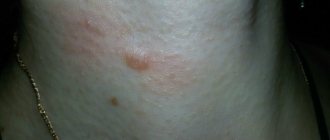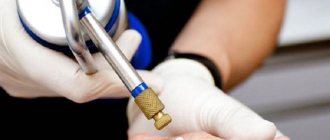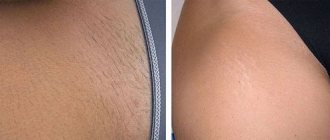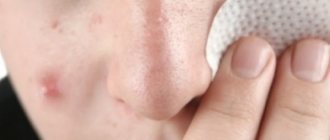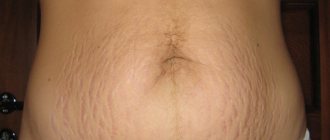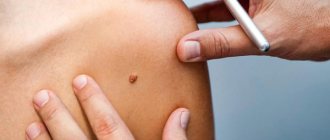The term papilloma defines a benign tumor that forms from skin cells or mucous membranes. The reason for its development is a specific human papillomavirus, which can be transmitted sexually or through household contact. Replication (division) of viruses leads to an increase in the activity of division of infected cells with the formation of characteristic formations (they are also called warts). The main method of treating papillomas is their removal using various modern physical techniques, including cryodestruction, electrocoagulation or laser therapy.
What can't you do?
After the operation, you should not wet the wound, expose the injured area to friction or other influences. It is also necessary to exclude exposure to direct sunlight on the injured area. This is due to the fact that the skin at the operation site is too thin and delicate; sunlight can cause burns or irritation.
It is imperative to ensure that chemicals, including household and cosmetic products, do not come into contact with the wound. The application of foundation creams and lotions is not recommended. For the first couple of months it is better not to visit baths and saunas.
After removing the papilloma in the clinic, the specialist will give recommendations on special care for the wound. Self-medication in this case is strictly not recommended. The choice of care product depends on the individual characteristics of the person, the course of the operation, and the method of removal.
Basic rules of care
The wound remaining at the site of the removed papilloma is already covered with a crust, which serves as a protective shield against infection. After removal of papillomas you cannot:
- injure the surface of the wound;
- Allow water to get on the wound for 24 hours, then wash it with hygiene products and rub with a towel;
- cover the wound with an adhesive plaster (if the wound is large, the adhesive plaster is temporary);
- stay in the open sun for more than 10 minutes;
- You can sunbathe after removal of papillomas, visit baths, swimming pools, and open reservoirs no earlier than 3 weeks after the procedure.
To speed up healing and improve tissue regeneration, doctors at the MedBioSpectrum clinics in Moscow on Kashirka (tel.) and in Ramenskoye recommend the use of antiseptic and epithelializing agents, the selection of which is carried out individually.
How to treat a wound?
As a rule, doctors recommend various antibacterial drugs enriched with a vitamin complex. The choice of medications depends on the characteristics of the procedure performed. It is understood that the doctor will monitor the patient’s condition until complete recovery.
The wound heals due to the formation of a scab from anesthetized tissue. There is no need to use potent topical preparations if the process proceeds without any peculiarities or pathology.
If there is an accumulation of purulent formations, then additional care of the operated area will be required. If everything is in order, and a crust has formed on the wound, it is lubricated with a solution of peroxide and furatsilin, then, after it has softened, it is removed, treating the resulting funnel. All these procedures are carried out in a clinical setting by medical staff.
Answers to questions - Moles, warts, papillomas, stretch marks, scars, CO2 laser
Answered by Irina Vyacheslavovna Markova, a cosmetologist-surgeon for 11 years - The total cost of removal consists of several components, the price of which is indicated in the price list: 1. Consultation with a cosmetologist-surgeon, which is carried out before the procedure. At the time of writing this text, the consultation price is 900 rubles, this amount is paid before the consultation. 2. The actual cost of tumor removal, which depends on the type of tumor (moles, warts, papillomas), the total number of tumors removed, the size in millimeters of each tumor and location (face, body, plantar wart). Please note that the price is set per 1 mm diameter. In this case, the largest diameter is taken into account in the case of a neoplasm of irregular shape. In addition, high-quality removal of a tumor involves careful treatment of the surface of contact between healthy skin tissue and the cells of the tumor being removed. Therefore, the apparent size must be increased by at least 1 mm. In case of removal of a tumor on the day of the consultation, two options are possible: 1) in case of a minor tumor, the cost of removal of which does not exceed the consultation fee, the removal is carried out free of charge; 2) otherwise, the price for removing tumors is reduced by the cost of the consultation, thus, the cost of the consultation is fully included in the removal and the consultation is virtually free. 3. Cost of anesthesia: depending on the circumstances, infiltration anesthesia (injection) or application anesthesia (applied to the surface) can be used. 4. After removal, if oncology is suspected, a histological examination of the removed tissue may be required, which is paid for separately. 5. When removing a large tumor, for example, a wart on the sole with a diameter of 10 mm, sutures and bandaging may be required. Let's consider the cost of removing a mole on the body with a diameter of 4 mm in prices valid at the time of writing this text: 1) consultation - 900 rubles 2) laser removal of a benign formation (nevi, moles, etc.), for 1 mm of diameter (body) - 400 rubles ; the cost of removing a tumor with a diameter of 4 mm will be 1,600 rubles; Taking into account the consultation fee, the cost of removal will be 700 rubles. 3) infiltration anesthesia, 1 ampoule - 300 rubles. Thus, without histology, the total cost will be 1900 rubles. The cost of histological examination is 2900 rubles and is paid separately.
How long does it take for a wound to heal completely?
As a rule, the wound heals within 2 weeks or a month. But the formation of a so-called keloid scar is possible, when the wound goes under the surface layer of the skin. If the patient has a tendency to develop such scars, which may exceed the size of the tumor, then it is necessary to choose the right method of removal.
If you decide to remove the tumor, you need to contact professionals. Any folk remedies can only be used under the supervision of an experienced dermatologist, otherwise the procedure may have unpredictable consequences.
How is papilloma removed?
Removal of papillomas is carried out in a beauty salon or medical institution equipped with special equipment, as well as meeting the conditions of asepsis (measures to prevent infection of the skin or mucous membranes during medical procedures). In most cases, the medical clinic performs papillomas removal on an outpatient basis, which does not require hospitalization of the patient. Regardless of the technique, the papilloma removal procedure does not last long (on average 15-20 minutes) and does not cause significant pain or discomfort.
Causes of papillomas
The content of the article
The causes of the appearance of papillomas on the body are divided into main and indirect, which act as a trigger for the development of the disease.
The main cause of skin papillomas is infection with the human papillomavirus (HPV) from the Papillomavirus group. HPV is a generalized term that refers to a whole group of viral agents that can infect epidermal structures and mucous membranes, and in some cases even provoke cancer.
According to statistics, the prevalence of HPV on the planet is global - the virus is in the body of 90% of adults. Science knows 100 strains of the papilloma virus, but not all of them are dangerous - the characteristics, localization zones and likelihood of developing cancer are different for each strain. The most dangerous are considered to be HPV 16.18, 31, 33 and 35, which in 98% of cases cause cervical cancer in women.
HPV does not tolerate aggressive environmental factors well, so it practically does not spread through the air. The main route of transmission is contact. The maximum risk of infection occurs through contact with the skin of a sick person.
The virus first penetrates the basal layer of the epidermis (skin), where it subsides for several months. The incubation period can last up to several years. If the immune system is weak, then the disease will show symptoms within a month, and the average period for symptoms to appear is 6 months.
The following reasons provoke the appearance of papillomas on the skin:
- Decreased immunity - colds, injuries, chronic diseases, HIV, AIDS;
- Microtraumas, scratches, open wounds on the surface of the patient’s skin;
- Hormonal imbalance, which may be associated with pregnancy, lactation, menopause, etc.;
- promiscuous sexual intercourse, oral sex with a carrier of the papilloma virus;
- nervous-emotional tension, stress, physical or mental fatigue;
- bad habits, poor nutrition;
- endometriosis.
Diagnostics
If papillomas form on the body, face or genitals, you should consult a dermatologist. This will allow not only to diagnose human papillomavirus infection at an early stage, but also to take measures to prevent the formation of new elements, as well as monitor changes in existing ones.
It is especially important not to delay visiting a doctor if there are signs of growth, change in color of the papilloma, unpleasant odor or pain in the area where it is located.
First of all, the doctor will perform a dermatoscopy, i.e., an examination of the tumors using a special magnifying device. This will make it possible to determine their nature, as well as to notice dangerous signs indicating a high probability of degeneration of a benign tumor into a malignant one, not to mention the formation of a cancerous tumor. When detected at an early stage of development, they can be successfully treated and have a favorable prognosis in the future.
Patients are recommended to be tested for the presence of STDs, especially if condylomas are detected in the genital area. Also in such situations, women are advised to consult a gynecologist, and men - a urologist. This is important for diagnosing the presence of human papillomavirus infection of the cervix, urethra, etc. and, if necessary, prescribing appropriate treatment.
To confirm papillomatous infection, patients are usually prescribed a PCR test. With its help, it is possible not only to confirm or refute infection with the human papillomavirus, but also to accurately determine the strains.
Features of the procedure
Removal of papillomas with nitrogen is usually carried out without any anesthesia. Some patients do not feel anything at all due to the fact that nerve fibers stop conducting pain impulses when they freeze. For other patients, the sensations are quite tolerable. When special tools are used for removal with liquid nitrogen, it goes very quickly and in one procedure you can easily get rid of all papillomas.
The healing time after nitrogen removal is further increased due to the fact that in the first days inflammation, swelling and rejection of dead papillomas cells occurs. Healing takes more than one week despite its small size. Before nitrogen removal, you should make an appointment in advance so that your doctor has nitrogen and tools prepared.
Variety of papillomas: 7 main types
Scientists know more than 100 types of HPV, but the most common are 10 types of papillomas:
- Plantar papillomas
. Causes papilloma on the leg - papillomavirus types 1, 2, 4. Plantar papillomas look like growths on the soles of the feet. Plantar warts can be single or multiple. Over time, it becomes painful for a person affected by the disease to walk. Plantar papilloma is often confused with a callus and is not sought medical attention, while the infection affects new areas of the skin. - Vulgar papillomas
. These are oval, keratinized lumps with a yellowish tint, usually appearing on the hands of adults. In children, such tumors can be found on the knees. - Flat papillomas
. The result of activation of HPV types 3, 10. The growths look like flat, smooth bumps. - Lewandowski-Lutz papillomas . The second name is epidermodysplasia verruciformis. The infection results in the formation of many mottled, multi-colored warts on the arms and legs.
- Filiform papillomas. Formed in older people. Warts look like yellowish bumps. Placed on the eyelids, groins, armpits, and neck. Threaded papilloma injured by clothing or as a result of scratching requires urgent treatment, otherwise inflammation and complications cannot be avoided.
- Juvenile papillomas . Associated with infection with papillomavirus types 6, 11. Formed in the larynx. As a result, breathing becomes difficult and speech deteriorates. The virus spreads during childbirth, transmitted to the newborn from the mother.
- Genital warts . The occurrence of genital warts is the main manifestation of infection, the source of which was the human papillomavirus. Visually, genital warts look like ordinary warts, can be small in size (up to a centimeter), have a flesh-colored or pinkish color, a slightly bumpy or completely smooth surface. The most common place for the formation of genital warts is the external genitalia. In men, these formations appear on the scrotum and penis. In women - on the labia majora and minora, on the cervix, near the clitoris, in the vagina. If condylomas are irritated, itching and bleeding may occur during sexual intercourse. Such papillomas transform into cancerous tumors.
Why are papillomas dangerous?
When papillomas appear from HPV viruses, they become a source of infection of other areas of the skin, to which the viruses spread when touched. Other papillomas may also appear there. In addition, HPV increases the likelihood of skin cancer. Occasionally, papillomas can become inflamed and fester, especially after injury. The main danger comes from an incorrect diagnosis, when the name “papilloma” actually hides cancer, melanoma or precancerous diseases. Particular care should be taken with regard to “papillomas” in the lips, mouth, tongue, genitals and anal areas. Papillomas of these localizations cannot be called papillomas - they are either warts or condylomas.
Sign up for a consultation
Prevention of scar formation after papilloma
In order for wound healing to proceed without complications, the following recommendations must be followed:
- Immediately after surgery, an unhealed wound should not be wetted with water and sealed with a band-aid - open air promotes rapid healing.
- Excessive use of potassium permanganate and other antiseptics can cause tissue necrosis. However, the wound must be disinfected to avoid infection. It is best to process no more than 3 times a day.
- Under no circumstances should you try to peel off a scab - healthy tissue will form under the rough crust. If it is damaged, infection may occur and the formation of an atrophic, hypertrophic or keloid scar.
- For treatment in hard-to-reach places, it is better to ask for help in order to thoroughly disinfect the wound.
- Until the wound heals, avoid sports (so as not to cause increased sweating), swimming pool, sauna and sun (ultraviolet radiation provokes the growth of scar tissue at the very beginning of its formation).
- If the papilloma was on the genitals, it is necessary to undergo examination by a gynecologist or urologist, because the infection could spread to the internal organs.
- If lumps, bulges, etc. appear, you should immediately consult a doctor.
During the rehabilitation period, it is also necessary to use ointments and creams prescribed by the doctor for rapid healing and scar prevention.
Symptoms of papillomas
Most often the papilloma virus
in women and men it does not manifest itself at all; its diagnosis is possible only through a special analysis. Vivid signs of infection are observed only in a small number of infected people, and even these often disappear after a short time.
For a long time, the patient does not even suspect that he has become a carrier of the infection, contagious to others. The main symptom of infection - a skin neoplasm papilloma - appears when the virus is in full control of the body. In this case, papilloma can grow on any part of the body - on the skin and mucous membranes.
There are a huge number of photos on the Internet that clearly show what papilloma and its colony look like. This is a skin growth in the form of a dome-shaped compaction or papule on a thin stalk. The papule may also have a thickened base. The color of the papilloma is also ambiguous - for some it is a pale pink “wart”, and for others it is a dark brown growth. Some strains of papillomavirus form entire colonies of neoplasms, which gradually merge into one unpleasant-looking multi-headed wart, reminiscent of cauliflower.
Can removal of papillomas be considered a treatment for HPV?
Unfortunately no. By removing papillomas, a dermatologist only eliminates manifestations of papillomavirus that can develop into cancer. The virus itself remains in the body. There are currently no specific drugs to cope with the human papillomavirus, and therefore the main therapy is aimed at mechanically eliminating tumors caused by the virus.
The infection is stopped with antiviral agents, which will be effective if the immune system is strong. Therefore, immunotherapy is carried out in parallel. While the virus lives in the body, papilloma cannot be cured forever.
